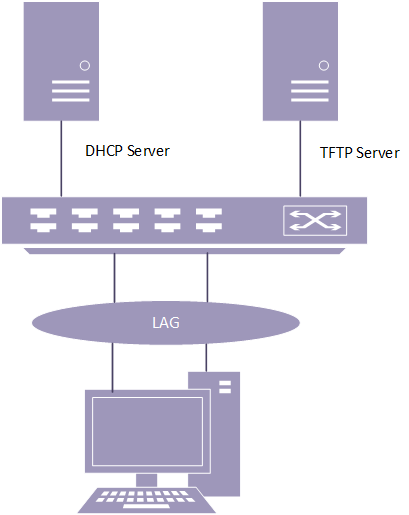Preboot Execution Environment (PXE) is a client/server environment that allows workstations to boot from the server before their full operating system is running. PXE images are too small to take advantage of LACP functionality, and therefore it is up to the administrator to statically configure the switch for correct connectivity. This also means that after the full operating is fully running the switch needs to be reconfigured back for LACP. The LACP fallback feature introduced in ExtremeXOS 21.1 allows for this process to be automated.

The LACP fallback feature allows you to select a single port which will be automatically added to the aggregator if LACP PDUs are not seen on any of the member ports within a specified period of time. If LACP PDUs are exchanged before this timeout expires, then the aggregator is formed using traditional means. If LACP PDUs are not received, then an active port with the lowest priority level is automatically added to the aggregator (enters fallback state). If ports have the same priority value then the lowest port number on the lowest slot number is chosen.
The selected port stays in fallback mode until fallback is disabled or until LACP PDUs start being received on any of the member ports, at which point the old aggregator is removed and a new one is selected based on information propagated in the LACP PDUs. The new fallback port may also be reelected if the existing fallback port changes state; such as port priority change, link bounce, or port enable/disable.

Note
In an MLAG (Multi-switch Link Aggregation Group) environment, fallback port selection occurs only on the LACP master switch.
 Print
this page
Print
this page Email this topic
Email this topic Feedback
Feedback